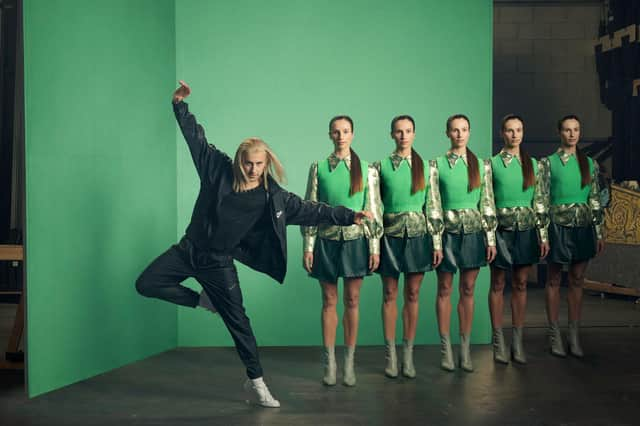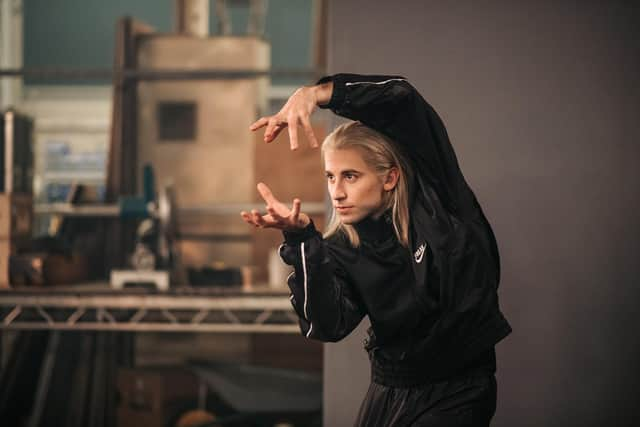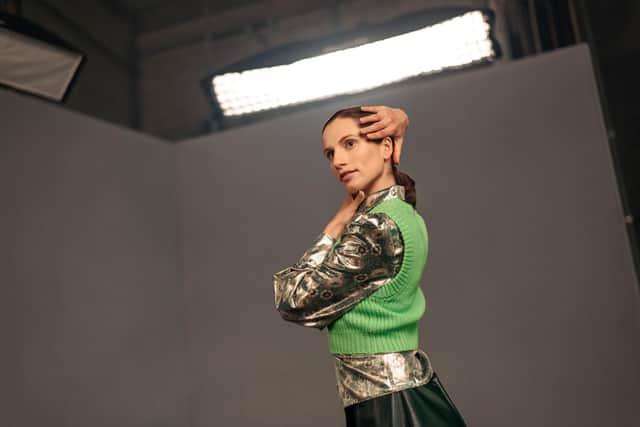Scottish Ballet's Coppélia: updating an age-old tale with new technology


There’s a beautiful symmetry at play in Scottish Ballet’s new production. A show about two female characters who blend into each other is being created by two real-life women whose creativity blends seamlessly.
Tasked with reinventing 19th century ballet Coppélia, Jessica Wright and Morgann Runacre-Temple have returned to the company following the success of their dance films Tremble and The Secret Theatre. This time, however, they’ve set themselves the challenge of mixing film and live action.
Advertisement
Hide AdWhen it receives its world premiere at the Edinburgh International Festival this August, their re-imagined Coppélia will fuse on-stage dancing, pre-recorded film and real-time video footage captured by dancers during the show. Add to that their brand-new synopsis, which swaps a quaint Austrian village for Silicon Valley, and they’ve got their work cut out.
It’s just as well Wright and Runacre-Temple (or “Jess & Morgs” as they’re known professionally) get on, having first met when they were both training at Central School of Ballet. “We’ve been best friends for 20 years and making work together for 15 of those,” says Wright. “So sometimes I’m not sure where I finish and Morgs begins, or where my idea finishes and hers starts. People often ask which one is the director and which one the choreographer? Or who made this scene and who made that scene? But we really don’t work like that.
“There’s very little conceptually, visually or choreographically where we could say one of us did this and the other did that – there’s a lot of overlap. And I think it works because we really trust each other and use one another as a sounding board. But we also really interrogate each other and have robust debates.”
“We’ve got such a shared language and our voices are so intertwined,” agrees Runacre-Temple. “So nothing feels personal or difficult – we’re always able to say to each other ‘that’s good’ or ‘that’s bad’.”
The pair first worked with Scottish Ballet in 2019, creating the dynamic short film Tremble, which saw 26 dancers carrying wobbly jellies in an abstract dining room. The Secret Theatre, released to great acclaim for Christmas 2020, cemented their relationship with the company and paved the way for this highly innovative work – a project which not everyone in the ballet world would necessarily get on board with.


“There’s a real un-preciousness at Scottish Ballet around what ballet is,” says Runacre-Temple. “It’s not a company where ballet is revered as being something holy, and they don’t cling to a very traditional idea of what ballet should be. Which is liberating, because it makes all the dancers and the general environment at Scottish Ballet quite fluid and playful – and that’s great for the kind of work we’re trying to create.”
Advertisement
Hide Ad“What we’re doing is breaking the mould a bit,” adds Wright. “But what’s special about working with a company over an extended period of time, is you develop a shared understanding and ambition. So we’re already on the same page and can just dive into the heart of it. Which is really nice with the dancers as well, because we’ve worked a lot with them on film but now we’re asking them to operate the cameras as well, so that’s a new challenge. But they’re always very open and curious, which is a pleasure for us.”
One of the dancers is Bruno Micchiardi, who is taking on the role of Dr Coppelius – formerly a carpenter who dreamt of bringing his doll to life, now a big shot CEO in Silicon Valley. As with the original, young Franz has his head turned by Dr Coppelius’ beautiful invention, Coppélia (now a revolutionary piece of AI), much to the chagrin of his fiancée. But here, Swanhilda is an investigative journalist keen to delve deeper into Dr Coppelius’ laboratory.
Advertisement
Hide Ad“Jess and Morgs have incredibly unique ideas,” says Micchiardi, “and I think what makes them special as choreographers and directors is that they work as a duo. They’re both full of amazing ideas, but then they also bounce off each other. One of them will say, ‘What if we turn it into this?’ and the other says, ‘Oh yes, and then let’s add this’ – and that’s what brings out the best in them both.”


Dancers usually have to ensure their movement and intention carries well beyond the front row, but by using real-time camera work in this new production, they can afford to be a little more subtle.
“I love working on camera,” says Micchiardi. “It allows for so many nuances that you might miss if you’re sitting at the back of the stalls. Whereas on camera, you can see every little quirk, every raised eyebrow. This new version centres around technology and I think the fact we’re portraying that not only through the story itself but by using such impressive technology live on stage is just so original. It’s also very funny – I’ve been in stitches learning it and I think audiences will respond really well to it.”
Wit is something that both Coppélia and the Jess & Morgs style have in common. They may have changed things up a little, but it was Coppélia’s inherent humour that attracted Wright and Runacre-Temple in the first place.
“It’s kind of comedic and dark at the same time, which I think is always a pull for us,” says Wright. “We’re interested in both ends of the spectrum and where they can meet. Technology is at the heart of Coppélia, and obviously that technology looked completely different when the ballet was first created – we’re not thinking about a wooden doll or a carpenter anymore.
“Technology has updated itself and that’s why we’ve set it in Silicon Valley, with inventors, data and unregulated power. So the world, the tone and the visual imagery will be very different from the traditional version and hopefully feel contemporary and fresh, but the story itself should still feel recognisable.”
Scottish Ballet’s Coppélia is at the Festival Theatre from 14-16 August, www.eif.co.uk